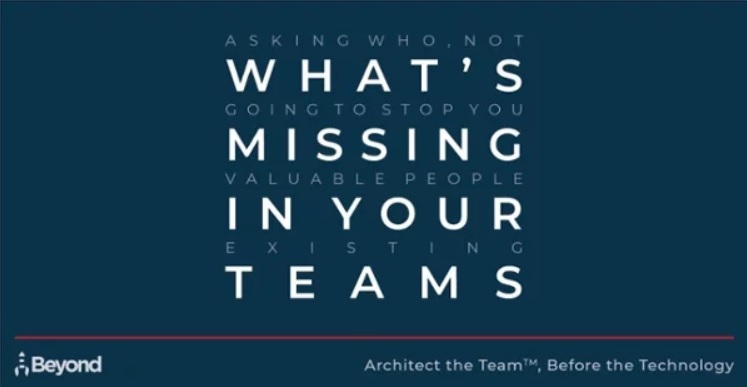You’re managing a growing tech team and hiring some of the best people your firm can afford, yet it can often feel like “herding cats” especially if the team is growing and the number of products and services are constantly evolving.
Accountability is becoming an issue, teams are in silos, and deep down, you know that the ultimate “villain” in this scenario is communication between the tech staff. But that’s acceptable behaviour because us technology people are known to be poor communicators.
But I would challenge the assumption that we are poor communicators. Most of what we build in the industry is to help people to communicate and work together. You need the imagination to visualise how people will work together in these ways. In my opinion, people in tech want to communicate, but they haven’t often challenged/taught to communicate effectively.
So, here are five steps to help you turn around your tech team:
1. Measure team performance
You can write an entire book in this area, but initially, I suggest three simple indicators – meeting attendance and contribution within meetings, combined with assessing the closure rate of projects. These may seem quite simple aspects to measure, but in this busy world, they are instant cultural indicators of your tech team’s performance.
2. What are the high-level steps necessary for turning a poor or average IT team into a high performing one?
Many people come into the technology industry as a hobby, and over time their roles often morph into something they no longer enjoy. This change of responsibility reduces their performance and limits creativity.
- (a) Increase self-awareness in the team. Help people learn about their natural strengths, give them a voice and stimulate honest conversation. Often through this process, you find hidden talents in the organisation and stimulate better performance from the team.
- (b) Assess the relationships across the team. Learn what the expectations are between team members and if the expectations fit the natural strengths of each individual. Uncovering our assumptions about each other can be very powerful as we often make assumptions on people’s ability based on their role, not their strengths.
- (c) Reallocate work based on steps (a) and (b). Once you have determined the natural strengths of the employee and mapped-out the expectations of each other, you can re-organise the workloads across the team based on the people, rather than based on the traditional org-chart. Doing this will ensure people are working in line with their natural strengths, are less stressed and usually happier.
Ensure there’s clarity in your actions and intentions so that the team can join you on this journey not judge you.
If you want more ideas, press the graphic below to be taken to our Tech Team Scorecard:
3. How can we enable elite performance in our tech team?
When we asses teams, there are often “Purpose” statements on the walls which the Tech Team fail to relate to connect to the work they do daily.
We work on the basis that everyone has the potential to be an elite performer, as long as they are in roles that match their natural skills, and there are sufficient resources to do their job.
Elite performers require creative conflict, a clear purpose they are working towards together and a genuine understanding of how their work impacts both the business they work for and the customer they serve.
When it comes to team assessment, it often traces back to the initial hiring processes – has the business hired “clones” who all think the same or is there a healthy mix of perspective and skills. Is your team multi-generational, multi-gender and multi-skilled?
4. What are the potential pitfalls to avoid when trying to motivate a team to greater heights?
- Bringing in a freelancer to move to more “modern” ways of working, who is at odds with the way the organisation works. Tech Team cultural changes work best when first focused on the core of your existing team.
- Trying to copy famous tech-team working cultures such as Spotify, Netflix etc. when it either does not suit the culture of your business or you do not have the budget
- Putting too many cultural changes in together at once.
5. What’s the best way to get started?
- Assess your teams and put them in the best positions that suit their natural strengths
- Re-invigorate creativity – establish ways to help the team become more effective by creating small teams with a specific remit and a short deadline.
- Give people time and space to think.
Conclusion
In the technology industry, we tend to dissect, dismantle and examine software, systems and data intimately. We sniff network packets, debug lines of code and spend fortunes, ensuring the user experience is just right. We hardly ever assume that “throwing” a load of code together will work, so we invest in checking the quality throughout.
But in contrast, when it comes to people – who individually are a gazillion times more complicated than any computer system – we treat them as black boxes and often “throw” them together to deliver projects.
Bottom line – you need to spend time away from technology and understand more about how your team thinks. And we have a slogan for this – we suggest leaders “Architect the Team®, before the Technology”.
Article by channel:
Everything you need to know about Digital Transformation
The best articles, news and events direct to your inbox
Read more articles tagged: Featured, Leadership








